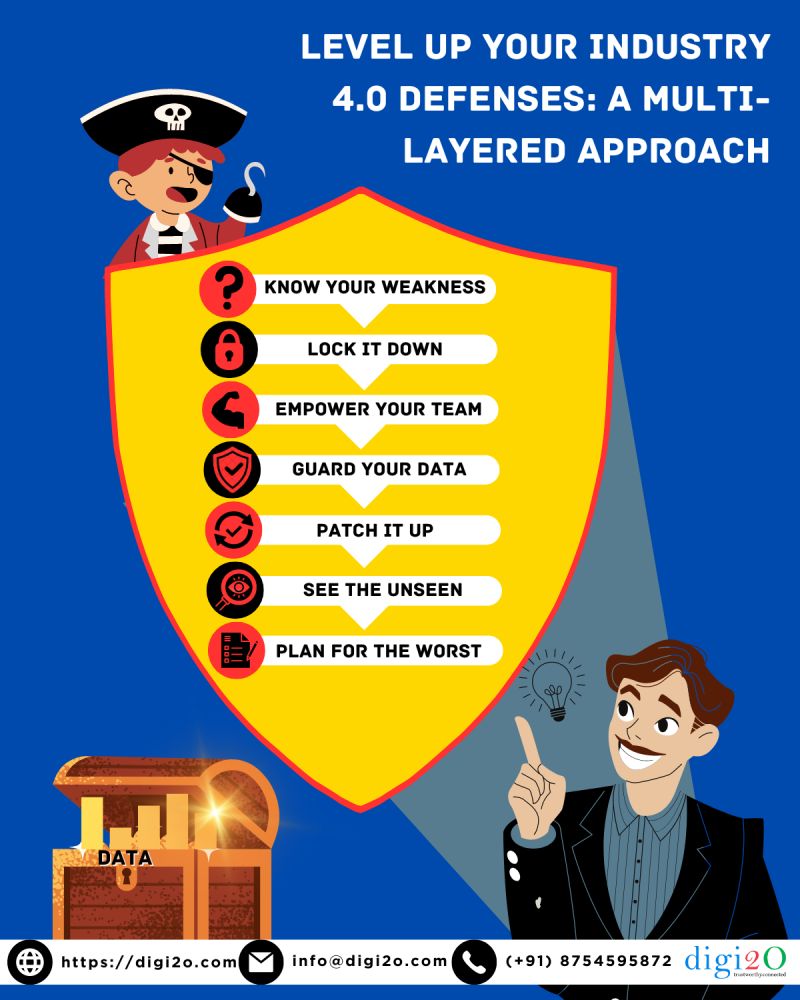
Before delving into the integration process, let's grasp the essence of IoT. Imagine a vast network of interconnected devices – from sensors and machines to vehicles and appliances – all communicating seamlessly to collect and exchange data. This interconnectedness forms the foundation of IoT, revolutionizing how industries operate.
Industry 4.0 represents the fourth industrial revolution, characterized by the fusion of digital technologies with traditional manufacturing processes. It heralds a new era of automation, data exchange, and smart technology integration, paving the way for enhanced efficiency and productivity.
Before integration begins, it's crucial to identify the specific areas within industrial processes where IoT can make a significant impact. Whether it's optimizing supply chain management, enhancing predictive maintenance, or improving product quality, pinpointing these opportunities is the first step toward successful implementation.
With a plethora of IoT devices and sensors available in the market, choosing the right ones can be daunting. Consider factors such as compatibility, functionality, scalability, and security when selecting devices tailored to your industrial needs. Remember, each device serves as a building block in the IoT ecosystem, contributing to the overarching efficiency of your operations.
Once the devices are selected, the next step is to establish robust connectivity and network infrastructure. Whether utilizing Wi-Fi, Bluetooth, RFID, or cellular networks, ensuring seamless communication between devices and the centralized system is imperative. Additionally, incorporating edge computing capabilities can minimize latency and enhance real-time data processing at the source.
IoT platforms and analytics tools play a pivotal role in harnessing the potential of data generated by IoT devices. These platforms facilitate data aggregation, visualization, and analysis, empowering businesses to derive actionable insights and make informed decisions. Whether deploying cloud-based solutions or on-premises systems, choosing the right platform tailored to your requirements is essential.
As data becomes the lifeblood of IoT-driven industrial processes, safeguarding it against cyber threats and breaches is paramount. Implement robust encryption protocols, access controls, and intrusion detection systems to fortify your IoT ecosystem. Additionally, adhere to data privacy regulations such as GDPR to maintain transparency and trust with stakeholders.
Deploying and integrating IoT devices into existing industrial infrastructure requires meticulous planning and execution. Adopt agile methodologies and collaborate closely with cross-functional teams to streamline the deployment process. Conduct thorough testing and validation to identify and rectify any compatibility issues or operational bottlenecks before full-scale implementation.
Once the IoT ecosystem is operational, continuous monitoring and maintenance are essential to ensure optimal performance and reliability. Implement proactive maintenance strategies leveraging predictive analytics to detect potential failures before they occur. Additionally, establish robust incident response protocols to address any unforeseen issues promptly.
Beyond operational enhancements, the true value of IoT lies in its ability to drive transformative business outcomes. Leverage the insights from IoT data to optimize processes, innovate product offerings, and enhance customer experiences. By harnessing the power of data-driven decision-making, businesses can stay ahead of the curve in today's competitive landscape.
In conclusion, integrating IoT devices into industrial processes is not just a technological endeavor but a strategic imperative in the era of Industry 4.0. By following these step-by-step guidelines, businesses can unlock new levels of efficiency, productivity, and innovation, driving sustainable growth and competitive advantage in the digital age.
Designed by W3Squad